"I am a techno-optimist. What else can I do," says Kristof Kintera
With the artist Kristof Kintera about his new book Out of Power Tower, about civilization whose batteries are running low, but also about the liberating view of the Earth from space.
You built the model of a small tower made of flat batteries already in 2016. What was the impulse for you to do this?
These are exactly the ignition moments. The first impulse is very often the object itself. I remember it all started in the e-waste sorting facility in Lety u Prahy. I saw the full bags of flat batteries and was fascinated by their colourfulness and quantity. It was love at first sight. At first it was only this impulse, and it took me a while to associate the details with our civilization and the scope of the matter.
When did the structure begin to take form? When did you realize the tower was becoming a huge megapolis full of extinct skyscrapers?
I make drawings for everything and also in their case it was a matter of layering batteries, stacking them into a small tower. Only later a cairn emerged. I was thinking then about upside-down stalagmites and the principles of growth of architecture in general. When I concluded the whole thing was strong and solid enough, it was necessary to make it really big. At that moment though, you realize all the possible problems and obstacles, but none of these are going to stop you because you already know it just has to be big. If the tower existed only on a small scale, it would never pose such an appeal or have such a glow.
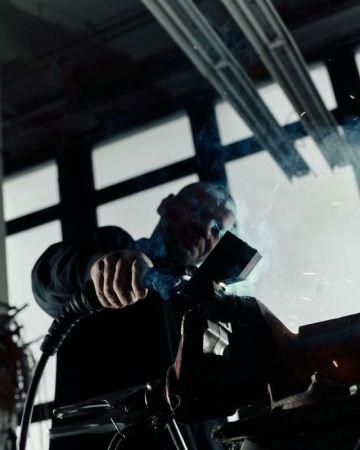
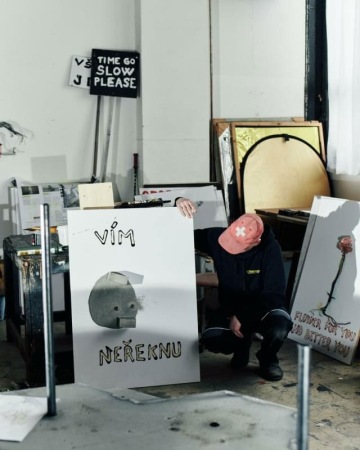
The book considers a flat battery as a memento of our civilization. You collected half a million of them, cut them apart in explosive situations for nine months and melted them into one frighteningly majestic, more than four-meter tall architectural shape. Did you realize anything fundamental about yourself or the world you live in during this process?
It would have been beautiful of course if it had led me to some kind of life transformation, but this didn't happen. However, if you work on such a thing for a long time, you become aware of all the links. I wanted to create a structure made of batteries with no energy, that would represent by their quantity not only civilization as a whole, but also all the individuals, each of us, who carry our batteries in or on ourselves so that we could be part of the whole system. In the final phase, I had to cut the individual batteries apart to actually reveal their true nature and toxicity. From the outside, the battery looks like Times Square, with all the inscriptions and corporate logos; a shiny, colourful, and attractive product that wants to be longed for, to be bought. But then you cut it and see its true composition, carbon, acids, and nickel. And seeing this you realize what it really is, how bad and toxic it is.
What do you personally draw energy from?
I'd like to know that too. But it's perhaps in the setting of my life, in the joy of life, the joy of being able to breathe in every day and do really what I like, what I consider important. I am glad to be alive and to be, in a certain way, privileged to create what I really want. It's immensely invigorating for me.
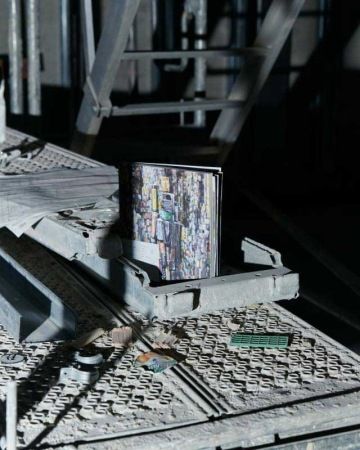
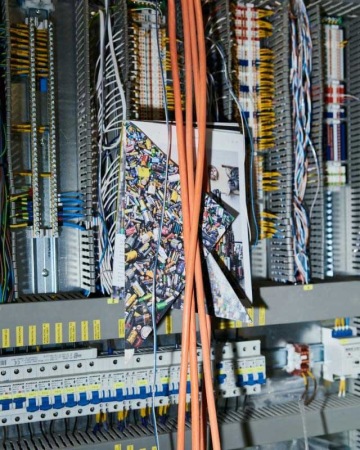
The book resonates with a wide range of historic moments of the world science. Key personalities including Nikola Tesla sparkle here. If you were to meet any of them in person, who would it be?
I would like to meet all of those who are mentioned in that encyclopaedic passage, but Tesla is an intriguing person, not only in terms of science, but generally in terms of thought and progress. To me, he always perfectly coupled in himself certain derangement and madness with a great comprehension of science and unlimited imagination, all of which played huge roles for him. So, if I had to choose, it would definitely be him. He’s a real guru.
And what about Zdenek Pesanek?
Pesanek is a very interesting figure of the Czech fine arts of course. Personally, I also like to use light very much, for its weightlessness and spirituality. Pesanek was also one of the first pioneers to use light in thinking about sculpture. That is why to me he is as important as Tesla. I got to know his work more closely when we were restoring some of his sculptures years ago. I had a chance to look into the scores he wrote with them then. From today's perspective, when everything is based on ones and zeros, it is extremely interesting how he thought in his times about colourful music, involving light-kinetic pianos.
In your creation process, do you let music influence you?
Music is an engine. It has a really enchanting atmosphere, being able to strongly influence one’s mood. In our studio, we listen to tons of different music, no limits and very loud!
What precisely makes this new book important for you?
I was looking forward to writing it for a long time, thinking about it already while working on the tower. By no means did I want to make an ordinary catalogue or a book just about the sculpture. I didn’t want to document only the creation process, but the theme itself. The sculpture is only the generator of the theme which the authors and real experts Milan Gustar and Milos Vojtechovsky discuss in the book in various contexts. That's why I'm so happy about it. It's my first book focusing on the theme of sculpture.
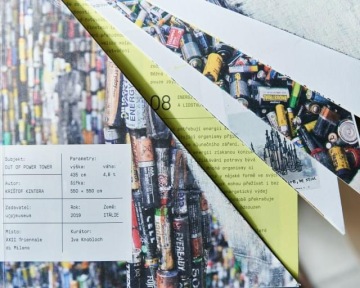
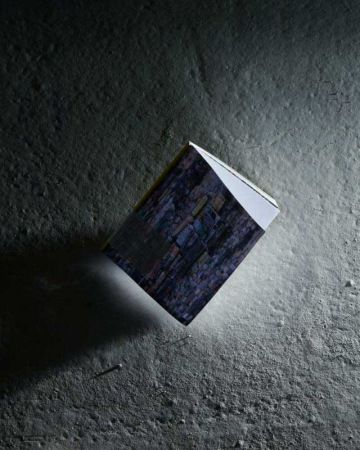
At the end of the book, there appears the famous photo of the seemingly fragile and vulnerable Earth taken by Apollo 8 in December 1968. Are you a techno-optimist?
What else can I do. Sometimes one almost has to force oneself to be a techno-optimist. I guess I am one because I believe that in the end the good in cooperation with technology will find the solutions to the complex problems we face as humanity and Earth. But the view of the Earth from space is absolutely fascinating. Even more radical is the photo taken from the Voyager probe in which the Earth is really just a tiny dot is even more radical; one, two or three pixels in the camera resolution. When you see this, you stop thinking about petty things and realize how boundless the universe is. It is a liberating experience.
Interview by Ondřej Čížek, PR Kunsthalle Praha
Photos © Vojtěch Veškrna
KRISTOF KINTERA: OUT OF POWER TOWER
Kristof Kintera's new book called Out of Power Tower is a remarkable documentary of the creation process of a monumental tower made of flat batteries which Kintera made for the Czech section of the XXII Triennale di Milano of 2019. Besides the extinct skyscraper megapolis, the 100-page paperback publication deals with some fascinating links and contexts associated with energy as such – from tense relations with humanity, through magnetism and electrochemistry, to accumulators. The energetic book is published by Kunsthalle Praha and The Museum of Decorative Arts in Prague. The texts by Iva Knobloch, Milan Gustar and Milos Vojtechovsky are visually complemented by Krystof Dolezal. The photos of the book were taken by Vojtech Veskrna directly on the premises of Kunsthalle Praha which is characteristically being built by converting the former Zenger’s transformer substation building in Prague-Klarov. The book can currently be purchased in the ArtMap Bookstore e-shop.
